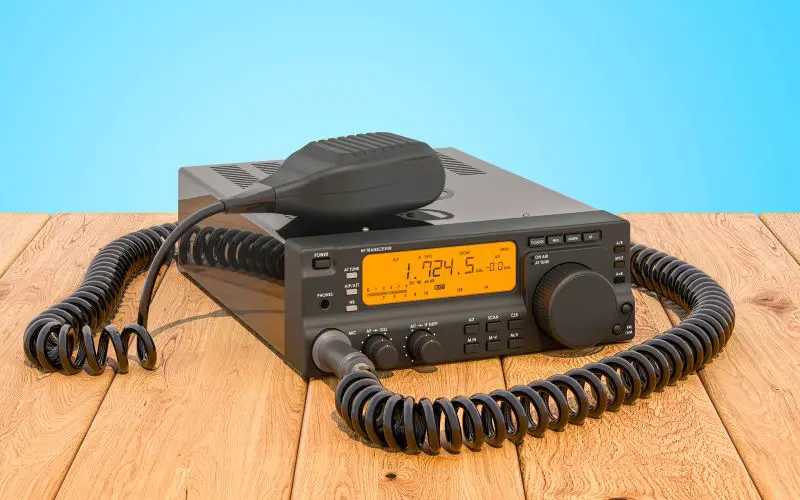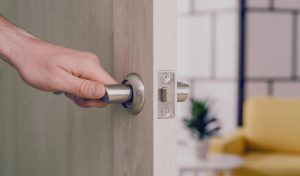If you’re new to ham radio, the wide variety of equipment and options can be daunting.
But don’t worry – there is an easy ham radio option for everyone and, with a little bit of careful selection, you’ll be able to choose a radio that will get you started in the hobby.
The easiest ham radio to use is one that meets your needs and preferences with the fewest number of buttons, dials and knobs. This might sound like a joke, but when you consider what it takes to be a successful operator and complete a contact, if you’re looking for simplicity then less is often more.
Ham radios can be a great way to stay connected with friends and family during emergencies, or when other forms of communication are not available.
But if you’re new to ham radios, it can be difficult to know which one is the best for you.
The easiest ham radio to use is one that works and does the job that you need it to do with the minimum of fuss and confusing add-ons.
If all you want to do is just get on the air and call CQ a couple of times a day – then no special features are needed.
Which bands do you want to work on?
When you’re looking for the easiest ham radio to use you will need to consider the bands or frequencies that you want to use – whether HF, VHF or UHF and this choice will affect your choice of equipment.
Do you want a base station or something portable?
Many ham operators like the flexibility that comes with portable equipment whereas others like to stay at home or ‘in the shack’ with a purpose built base station.
If you like to combine the two options then you can use a radio that is designed for portable activities, at home, while retaining the ability to ‘take it on the road’.
You may also wish to have a handheld radio and, in this respect, there is a wide choice available.
What technology is best – analogue or digital?
When you’re shopping for the easiest ham radio to use you should consider whether your next purchase will be an analogue or digital model.
This choice may well depend on personal preference and it might be worth trying out both types before making a final decision.
As with most things, there are pros and cons of each so this could help when deciding which type of radio is right for you.
Analogue models tend to have an easier user interface because the controls are laid out in a straightforward way, whereas with some digital radios can have rather complex menus that need understanding to work them properly.
Which features do you really need?
A lot of modern ham radios have a huge number of advanced features, including advanced digital technology and software defined radios (SDR).
These are great if you want to tinker with your radio but if you’re looking for the easiest ham radio to use then there is no point having functions that you don’t need.
Features that generate a lot of heat, require additional cooling or eat battery power might just be an unnecessary burden because they will have a negative impact on your operating experience.
Battery life
Be aware that some radios have an excellent transmit time but very poor battery life because of complex circuitry.
This may not matter too much if you only do short transmissions occasionally but it can be difficult for new hams who are learning Morse Code because their speed will be limited by how long they have to wait for the battery to recharge.
If you think that a radio with a long battery life sounds like a good idea then it might be worth considering a model where the battery is not built-in and can be removed when it’s time to recharge, as this will allow you to easily replace an older lower capacity unit with a newer higher capacity one.
This may become important if you only use your ham radio infrequently as old batteries that have lost their ability to hold charge can be difficult or impossible to remove from certain models of equipment.
Which accessories do I need?
Before buying any accessory make sure it’s compatible with your chosen ham radio platform and ideally buy from a reputable supplier.
There are a number of different types of ham radio platform available at present including handheld, mobile, fixed station and portable – each has their own accessories.
You might need additional antennas for example or you may require an external power source or charger.
A lot of radios have interchangeable batteries but this does mean that you need to take special care when selecting the right unit because it needs to be suitable for your particular model.
Other accessories can include headsets, microphones, speakers and in-vehicle chargers so there is plenty that you can add on if necessary.
Your level of knowledge
An easier ham radio to use will usually have fewer controls and functions than one that is aimed at experienced users.
If you are a beginner this might be more important because there will be less to figure out and learn before you can make full use of the device.
As with most things, understanding your chosen ham radio’s features will come with time but if you’re really not interested in having to deal with too much complexity right now then it is worth bearing the points outlined here in mind when thinking about your next purchase.
The availability of easy-to-use ham radios has increased significantly over recent years, making them accessible even for total beginners, which was not always the case.
Easy to use handheld ham radio for VHF and UHF bands
The Baofeng BF-F8HP radio is a popular choice among beginner and experienced ham radio operators due to it’s size, simplicity, quality of build and cost.
The radio is a dual band handheld that operates in the VHF and UHF bands which are often the choice of beginners and provides 8 watts of power across the two.
The other attraction that this ham radio has is that it comes with everything that you need to get on the air straightaway with earpiece, charger and a range of other items all included in the kit.
In addition, it can be programmed from a computer but other than that is fairly straightforward to use with only 12 buttons and an easy-to-read display screen.
This ham radio is ideal for anyone who wants something portable to get started with or who needs a reliable backup set of equipment for fixed stations.
It’s also great for beginners because it doesn’t take too much effort to learn how everything works and thanks to such good build quality you don’t need to worry about damage in the field.
Easy to use HF ham radio
The Xiegu G90 HF transceiver is a solid, well made ham radio transceiver for use on the HF bands and comes at a fraction of the price of similar radios.
The radio comes with quite a few features but it is easy to use and an ideal choice for a new ham radio operator or, for an experienced ham looking for a cost effective option.
As an owner and user of this radio, my choice was made based on a number of different reviews from hams that had been operators for many years and, I’m pleased to say that they were correct.
The radio provides a maximum power output of 20 watts which may seem low but I’ve achieved contacts from across Europe, South America and Africa using a hastily assembled wire antenna.
With AM/FM/CW and SSB the radio operates on 13.8 volts DC making it an ideal choice for home use ( with a suitable power supply ) or for mobile use in a vehicle or when hiking ( with a suitable battery ).
The radio covers all of the ham frequencies from 1.8 Mhz to 29.999 Mhz which allows you to work across all of the ham bands.
As an entry level, easy to use and budget friendly rig, this is one that you should explore and consider further.
Easy to use VHF/UHF radio
A great cost effective and easy to use radio that can be used at home or portable in a vehicle is the Retevis RT95.
This another ham radio that I own which provides access to the VHF and UHF amateur bands.
It is a solid, well built piece of equipment and actually feels bulletproof, such is the build quality.
The switchgear operate with satisfying, solid clicks and the audio output is clear without any distortion.
Power output is a maximum of 25 watts and, by using only 10 watts, I’ve had good, clear conversations with hams located in excess of 50 miles away on the 2m band.
The dual band operation is easy to use and comes with 200 channels that can be programmed to hold your chosen frequencies and the 9 level squelch control is effective and easy to operate.
The VOX function is a great feature for mobile use and works surprisingly well with an easy setup – allowing hands free operation when driving.
Price wise this is a great choice for a beginner looking to get a good, solid and reasonably powerful radio for use on the VHF and UHF bands.
Final Words
So there you have three ham radios that are easy to use, beginner friendly, well made and provide both quality of build and performance for the price.
These are also great backups for more experienced operators looking for an alternative or a backup set of equipment.
All three of these radios are great choices and, from my experience of using each of them, I’m confident that you won’t be disappointed.
If you’re looking for something that is easy to use, performs well and provides solid, reliable performance then any one of these radios will be just what you need.
Read Next
- The Unspoken Complexity. Navigating the Awkwardness of Silence
- Can Guys Wear Thigh High Socks? Embracing Style and Comfort
- 7 Tips to Navigate the Delicate Art of Painting Your Side of a Neighbor’s Fence
- Silence Your Space: 5 Expert Strategies on How to Stop A Radiator from Making a Noise
- The Ultimate Guide to How to Quiet a Squeaky Door: 11 Proven Methods to Silence the Noise
- The Ultimate Guide to How to Quiet a Rattling Car: Proven Strategies for a Peaceful Ride










